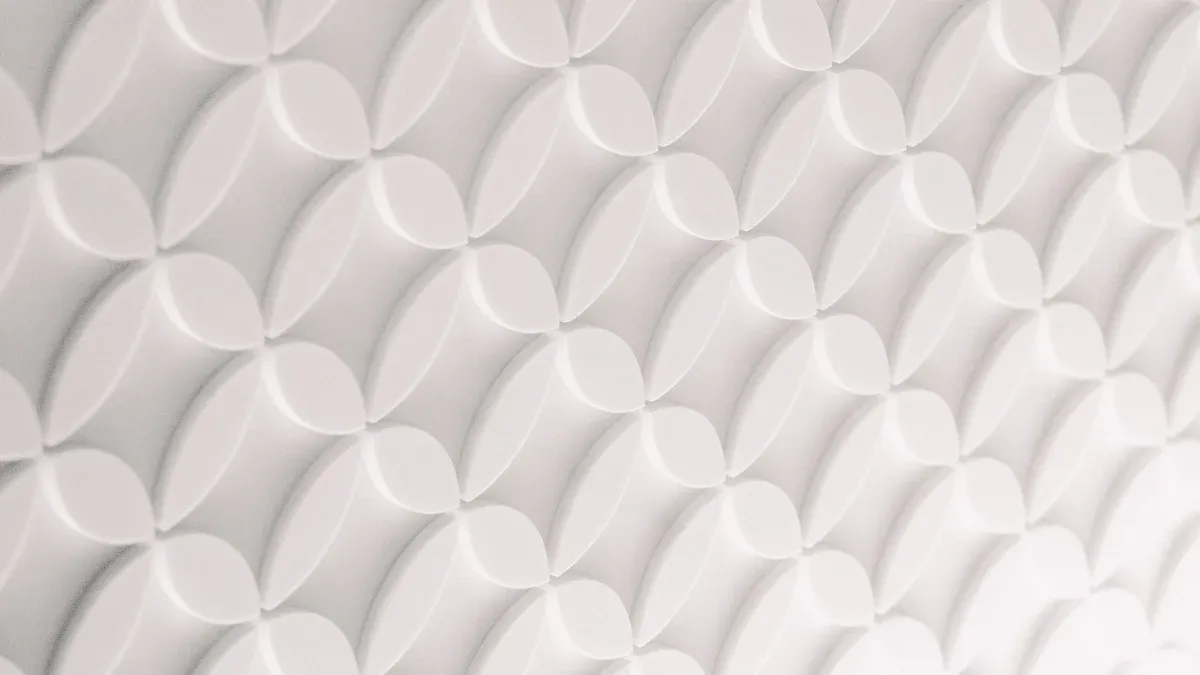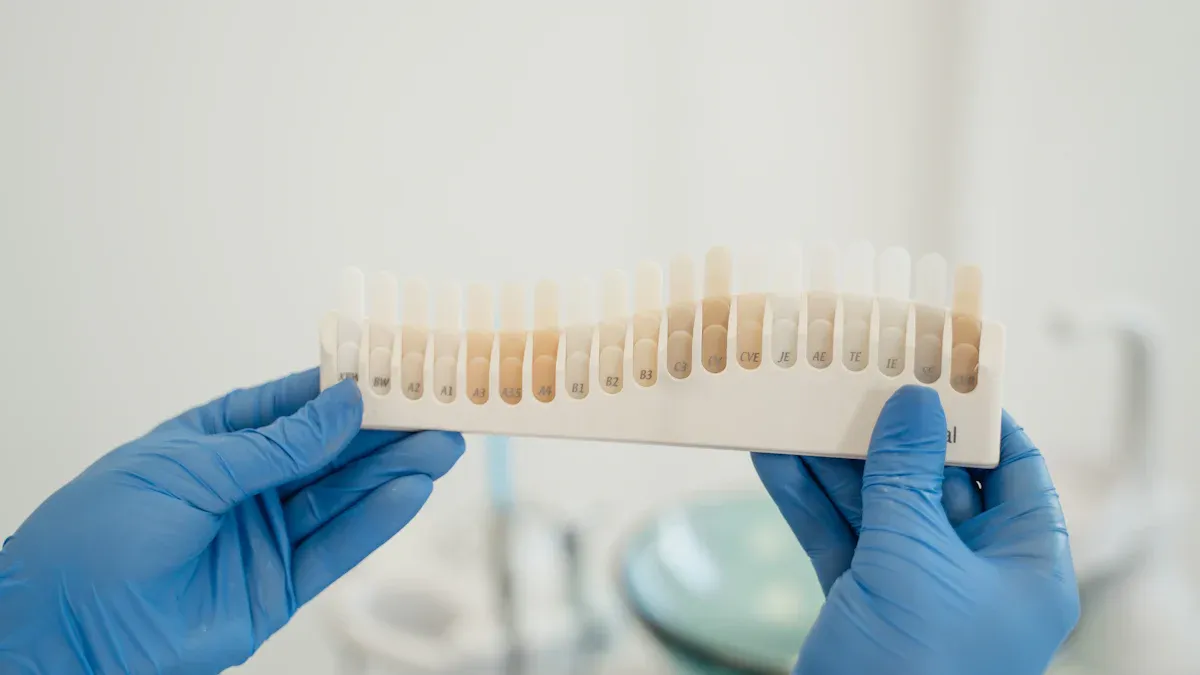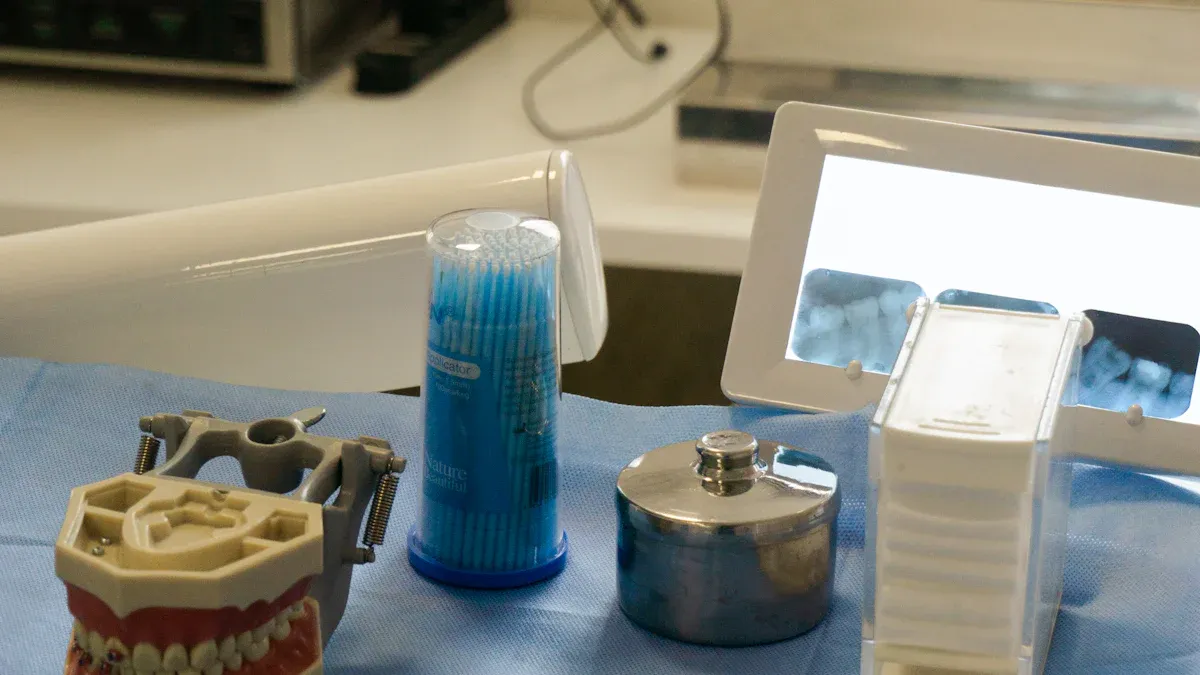
Selecting an EPI SUSCEPTOR involves careful evaluation of material composition, thermal performance, durability, process compatibility, cost, and customization. These factors shape yield, uniformity, and reliability in advanced MOCVD and CVD systems. EPI SUSCEPTOR choice also influences process efficiency, product quality, and overall operational costs.
Key Takeaways
- Choose EPI susceptor materials that offer high purity and thermal stability to ensure uniform heating and prevent contamination during semiconductor manufacturing.
- Prioritize durability and chemical resistance to reduce maintenance costs and avoid production downtime caused by susceptor wear or damage.
- Work closely with suppliers to select or customize susceptor designs that match your specific process needs, improving efficiency and product quality.
EPI SUSCEPTOR: Definition and Role

What Is an EPI SUSCEPTOR?
An EPI SUSCEPTOR is a specialized component used in semiconductor manufacturing. It holds wafers during processes like Metal-Organic Chemical Vapor Deposition (MOCVD) and Chemical Vapor Deposition (CVD). Manufacturers design these susceptor plates to withstand high temperatures and harsh chemical environments. Most EPI SUSCEPTORS use materials such as graphite or silicon carbide because these materials resist corrosion and provide stable support.
Note: The choice of susceptor material can affect the quality and consistency of the semiconductor layers grown on the wafer.
Function in MOCVD and CVD Processes
In MOCVD and CVD systems, the EPI SUSCEPTOR plays a key role in heating and supporting the wafer. The susceptor absorbs energy from the reactor, usually through induction or radiant heating. It then transfers this heat evenly to the wafer surface. This uniform heating helps ensure that thin films grow at a consistent rate across the entire wafer.
- Maintains precise temperature control
- Supports the wafer during deposition
- Protects the wafer from direct contact with reactor gases
A well-designed susceptor improves process efficiency and product quality. It also reduces the risk of defects in the final semiconductor device.
Key Factors in EPI SUSCEPTOR Selection
Material Composition and Purity
Material composition stands as a primary consideration in EPI SUSCEPTOR selection. Manufacturers often choose materials like silicon carbide-coated graphite, pure graphite, or coated molybdenum. These materials offer high thermal stability and resist chemical attack. Purity levels directly affect contamination risk. High-purity materials help prevent unwanted particles from entering the process chamber. This protection ensures that the wafer surface remains clean during deposition.
Note: Impurities in the susceptor can lead to defects in the semiconductor layers, reducing device yield and reliability.
Thermal Uniformity and Conductivity
Thermal uniformity ensures that every part of the wafer receives the same amount of heat. Uneven heating can cause variations in film thickness and crystal quality. High thermal conductivity materials, such as silicon carbide, distribute heat efficiently. This property supports precise temperature control across the wafer. Consistent thermal performance leads to better process repeatability and higher product quality.
- Uniform heating reduces the risk of hot spots.
- Good thermal conductivity improves deposition uniformity.
Durability and Lifespan
Durability measures how well an EPI SUSCEPTOR withstands repeated thermal cycling and exposure to harsh chemicals. A long lifespan reduces the need for frequent replacements. This factor lowers maintenance costs and minimizes downtime. Manufacturers test susceptors for resistance to cracking, warping, and erosion. Durable susceptors maintain their shape and function over many production cycles.
Compatibility with Process Chemistry
Process chemistry varies between MOCVD and CVD applications. Some processes use aggressive gases or high temperatures. The EPI SUSCEPTOR must resist corrosion and chemical reactions with these gases. Material compatibility prevents unwanted reactions that could contaminate the wafer or damage the susceptor. Selecting the right material ensures stable operation and consistent results.
Cost and Availability
Cost plays a significant role in the selection process. High-performance materials often come with higher prices. However, investing in a quality EPI SUSCEPTOR can reduce long-term costs by improving yield and reducing maintenance. Availability also matters. Reliable suppliers ensure that replacement parts are easy to source, which helps maintain steady production schedules.
| Factor | Impact on Selection |
|---|---|
| Cost | Affects budget and ROI |
| Availability | Influences lead time and downtime |
Customization and Design Flexibility
Different applications require different susceptor shapes, sizes, and coatings. Customization allows manufacturers to match the EPI SUSCEPTOR to specific reactor designs and wafer sizes. Design flexibility supports process optimization. Some suppliers offer tailored solutions, including special coatings or unique geometries, to meet advanced process needs.
Tip: Work closely with suppliers to specify design features that enhance process performance.
Review of Top EPI SUSCEPTOR Options

Leading Materials: SiC-Coated Graphite, Pure Graphite, Coated Molybdenum
Engineers often select SiC-coated graphite for its excellent thermal conductivity and chemical resistance. This material supports high-temperature operations and resists corrosion from process gases. Pure graphite offers good thermal performance and a lower cost, but it may not last as long in aggressive environments. Coated molybdenum provides strength and stability at very high temperatures. It works well in specialized applications that demand extreme durability.
Tip: SiC-coated graphite usually fits most MOCVD and CVD processes, while coated molybdenum suits niche or high-stress environments.
Top Manufacturers and Product Lines
Several companies lead the market for EPI SUSCEPTOR solutions. Linde Advanced Material Technologies, Toyo Tanso, and SGL Carbon supply a wide range of products. Each manufacturer offers unique features, such as advanced coatings or custom geometries. Product lines like Linde’s EpiPro, Toyo Tanso’s TSK series, and SGL Carbon’s SIGRABOND series address different process needs.
- Linde Advanced Material Technologies: EpiPro series
- Toyo Tanso: TSK series
- SGL Carbon: SIGRABOND series
Comparative Table of Features and Performance
| Material | Thermal Conductivity | Chemical Resistance | Durability | Typical Use Case |
|---|---|---|---|---|
| SiC-Coated Graphite | High | Excellent | High | General MOCVD/CVD |
| Pure Graphite | Moderate | Good | Moderate | Cost-sensitive settings |
| Coated Molybdenum | High | Excellent | Very High | Extreme environments |
Application-Specific EPI SUSCEPTOR Recommendations
Selection for GaN, SiC, and Other Compound Semiconductors
Engineers select different susceptor materials based on the compound semiconductor in use. Gallium nitride (GaN) processes often require high temperatures and aggressive gases. SiC-coated graphite works well for GaN because it resists corrosion and provides stable thermal performance. Silicon carbide (SiC) wafer growth also benefits from SiC-coated graphite due to its matching thermal expansion and chemical resistance. For other compound semiconductors, such as gallium arsenide (GaAs) or indium phosphide (InP), pure graphite may offer a cost-effective solution. The choice depends on the process temperature, gas chemistry, and wafer size.
Tip: Review the process requirements for each material before selecting a susceptor. This step helps avoid contamination and ensures consistent results.
Considerations for High-Volume Production vs. R&D
Production environments and research labs have different needs. High-volume manufacturing demands long-lasting, reliable susceptors. SiC-coated graphite often provides the best balance of durability and performance for these settings. In research and development (R&D), flexibility and cost matter more. Pure graphite or custom-designed susceptors allow quick changes and lower initial investment. The EPI SUSCEPTOR choice should match the scale and goals of the operation.
| Setting | Recommended Susceptor Type | Key Benefit |
|---|---|---|
| High-Volume | SiC-Coated Graphite | Long lifespan |
| R&D | Pure Graphite/Custom | Flexibility, low cost |
Practical Tips for EPI SUSCEPTOR Evaluation and Procurement
Assessing Quality and Performance
Engineers should check the surface finish and coating integrity of each EPI SUSCEPTOR. A smooth, defect-free surface helps prevent contamination during wafer processing. They can use thermal imaging to confirm even heat distribution. Many teams also review supplier test data for thermal cycling and chemical resistance. Reliable suppliers provide certificates of analysis and detailed inspection reports.
Tip: Request a sample susceptor for in-house testing before making a large purchase.
Questions to Ask Suppliers
Buyers should prepare a list of questions when speaking with suppliers. Key questions include:
- What is the typical lifespan of this susceptor in production?
- Can you provide references from other customers in similar applications?
- What quality control steps do you follow during manufacturing?
- How quickly can you deliver replacement parts?
- Do you offer custom design or coating options?
A clear discussion helps avoid misunderstandings and ensures the product meets process needs.
Maintenance and Lifecycle Management
Regular inspection extends the life of an EPI SUSCEPTOR. Teams should look for signs of wear, such as cracks or coating loss. Cleaning schedules help maintain performance and reduce contamination risk. Many facilities track each susceptor’s usage and replace them based on hours in service or number of cycles. Good lifecycle management lowers costs and keeps production running smoothly.
Selecting the right EPI SUSCEPTOR depends on material, thermal performance, durability, and process compatibility. Teams should match susceptor choice to specific process needs. They can review supplier data, request samples, and evaluate performance before making a final decision.
FAQ
What is the typical lifespan of an EPI susceptor?
Most EPI susceptors last between 6 months and 2 years. Lifespan depends on process conditions, material choice, and maintenance routines.
Can EPI susceptors be reused after cleaning?
Yes, many EPI susceptors can be reused after proper cleaning. Teams should inspect for cracks or coating loss before returning them to service.
How does susceptor material affect wafer quality?
Susceptor material impacts heat distribution and contamination risk. High-purity, thermally stable materials help ensure uniform wafer growth and reduce defects.


